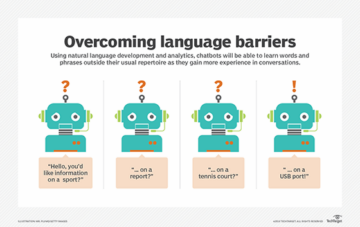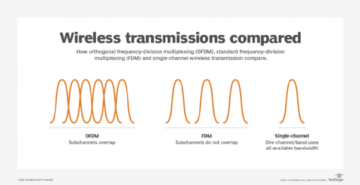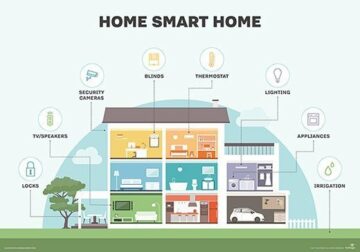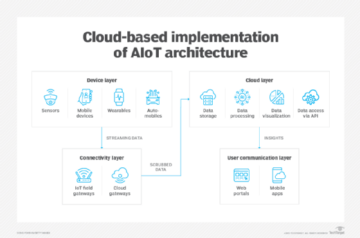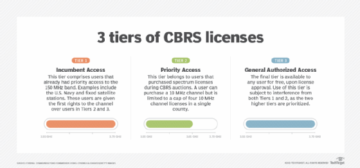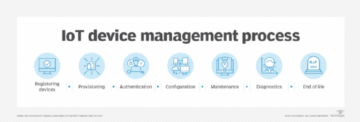
There was a time when you could simply build a smart device and then sell it and forget it. Connectivity changed everything. Now, there are more options to develop, manage and sell an IoT device. Device developers are driving innovation, accelerating IoT evolution, delivering new use cases and continuously improving product quality. All of this taps into a major opportunity as the IoT market continues to rapidly grow.
The developer journey looks familiar, whether for sensors, industrial appliances or edge nodes, made possible through mobile connectivity advancements and component improvement.
For each case, IoT device manufacturers must iron out a business model, find a great team to build the hardware and the firmware, and select device architecture that meets project requirements.
Then comes the work of implementing the application and device — and figuring out how to keep them operable and useful. The potential to create revenue has increased with subscription-based pricing models, but realized success depends on delivering products that work well and offer unique features that customers are willing to use on an ongoing basis.
No matter your business plan, the 2022 IoT landscape demands transparency and the ability to meet customers’ high expectations. Unfortunately, any and every customer has access to a megaphone, and experience tells us that dissatisfied ones tend to deploy it often. A bug, device failure or subpar customer service — any weakness can be presented loudly and repeatedly on social media.
If you decide to build an IoT device and want to retain customers and develop a quality product, there are four main things to do for a successful launch.
1. Build for the long term
There’s no question that you’ll ship bugs. That’s not a problem. But what is a problem is not integrating a method for observability to monitor performance and fix those bugs.
IoT designers can’t anticipate all the ways in which end users operate their devices. Such use uncovers bugs you weren’t expecting. Fixing those requires near-instantaneous access to data and logs. If a product is built to capture and manage that data, then designers have a chance to improve their product before anyone else notices. Without access to device data, expect to either spend countless engineering cycles trying to recreate a unique event or ignore it and wait for others to experience your product in a suboptimal way.
Building observability into your devices is critical for business success. Consider other stakeholders who may require essential operational data; marketing may need to know how the number of updates correlates to a reminder email, or the product team may want to know how many users engage with a specific feature daily. Device health and operations insight are essential for your team and any company stakeholders.
If you don’t build in a way to monitor devices and capture critical data, reverse-engineering your device to capture data after launch is much more costly and painful. Building your product with ongoing device observability from the start ensures instant access to the data you need to keep a product functioning and improving.
2. Use updated development approaches
Traditional approaches often mean product freezes, leaving teams to lose out on months of development time. Adopting a flexible and observable approach can avoid these delays. Planning for and building in remote monitoring and updating capabilities enable teams to ship minimum viable product and iterate even when the product is in the end user’s hands.
Using a day zero update enables you to ship devices with incomplete firmware and then push an over-the-air update to the device when the customer unboxes it. This approach lets you ship on time, while giving software teams a few more crucial weeks to build the final firmware.
3. Stage device update rollouts
For device fleets in the tens of thousands or millions, a glitch in a fleet-wide rollout can create a genuine fiasco. Limiting the impact of unanticipated bugs in version updates is a superior alternative — one that can be done easily with staged rollouts.
If you restrict an update to company employees and then to trusted parties, it means you can gauge potential issues on a small scale without major disruption. After the initial rollout, developers should section out a small percentage of end users for the next stage, monitoring device health and capturing real-time metrics for potential triage and repair.
Another option is to time-release intervals. This approach deploys a predetermined interval, during which devices that call in receive over-the-air payloads. These devices can then be monitored during their check-ins to determine whether to expand the rollout.
With options to limit your releases, there’s no reason to push a fleet-wide update before you confirm its success.
4. Take a proactive approach to security
Perhaps because it’s a nascent market or due to the speed of innovation, the IoT industry has gotten away with less focus on security than its software counterpart. The results are serious; sophisticated botnets can use simple devices, such as cameras and hacking devices, to spy on unsuspecting users.
Developers must build a strong security strategy from the beginning. Basics include securing your updates and cryptographically signing firmware to restrict others from loading firmware onto your devices.
A next step is to employ cryptography to secure the link between your device and the cloud, whether Transport Layer Security or Mutual TLS. Building with security in mind does not just save you money, but it exponentially reduces the chance that your device becomes compromised in the future.
Build with an eye for the long term. Rely on today’s best practices. Capture insights, and learn from rollouts. Be proactive. These relatively simple steps can help ensure that your IoT device is set up securely and successfully — and that your customers stay happy and loyal.
- SEO Powered Content & PR Distribution. Get Amplified Today.
- Platoblockchain. Web3 Metaverse Intelligence. Knowledge Amplified. Access Here.
- Source: https://www.techtarget.com/iotagenda/post/4-essential-steps-to-IoT-device-development
- 1
- 2022
- a
- ability
- accelerating
- access
- Adopting
- advancements
- After
- All
- alternative
- and
- anticipate
- anyone
- appliances
- Application
- approach
- approaches
- architecture
- Basics
- basis
- because
- becomes
- before
- Beginning
- BEST
- best practices
- between
- Bug
- bugs
- build
- Building
- built
- business
- business model
- business plan
- call
- cameras
- capabilities
- capture
- Capturing
- case
- cases
- Chance
- Cloud
- company
- component
- Compromised
- Confirm
- Connectivity
- Consider
- continues
- could
- create
- critical
- crucial
- cryptography
- customer
- Customer Service
- Customers
- cycles
- daily
- data
- day
- delays
- delivering
- demands
- depends
- deploy
- deploys
- designers
- Determine
- develop
- Developer
- developers
- Development
- device
- Devices
- Disruption
- driving
- during
- each
- easily
- Edge
- edge nodes
- either
- employees
- enable
- enables
- engage
- Engineering
- ensure
- ensures
- essential
- Even
- Event
- everything
- evolution
- Expand
- expect
- expectations
- experience
- exponentially
- eye
- Failure
- familiar
- Feature
- Features
- few
- final
- Find
- Fix
- flexible
- Focus
- from
- functioning
- future
- Giving
- glitch
- great
- Grow
- hacking
- Hands
- happy
- Hardware
- Health
- help
- High
- How
- How To
- HTTPS
- ICON
- Impact
- implementing
- improve
- improvement
- improving
- in
- include
- increased
- industrial
- industry
- initial
- Innovation
- insight
- insights
- instant
- Integrating
- iot
- IoT Device
- issues
- IT
- journey
- Keep
- Know
- landscape
- launch
- layer
- LEARN
- leaving
- Lets
- LIMIT
- LINK
- loading
- Long
- LOOKS
- lose
- loyal
- made
- Main
- major
- manage
- Manufacturers
- many
- Market
- Marketing
- Matter
- means
- Media
- Meet
- Meets
- method
- Metrics
- millions
- mind
- minimum
- minimum viable product
- Mobile
- model
- money
- Monitor
- monitored
- monitoring
- more
- mutual
- nascent
- Need
- New
- next
- nodes
- number
- offer
- ONE
- ongoing
- operate
- operational
- Operations
- Opportunity
- Option
- Options
- Other
- Others
- painful
- parties
- percentage
- performance
- plan
- planning
- plato
- Plato Data Intelligence
- PlatoData
- possible
- potential
- practices
- presented
- pricing
- Proactive
- Problem
- Product
- Product Quality
- Products
- project
- Push
- quality
- question
- rapidly
- real-time
- realized
- reason
- reduces
- relatively
- Releases
- remote
- repair
- REPEATEDLY
- require
- Requirements
- requires
- restrict
- Results
- revenue
- Save
- Scale
- Section
- secure
- securely
- securing
- security
- sell
- sensors
- serious
- service
- set
- should
- signing
- Simple
- simply
- small
- smart
- Social
- social media
- Software
- specific
- speed
- spend
- Stage
- stakeholders
- start
- stay
- Step
- Steps
- Strategy
- strong
- success
- successful
- Successfully
- such
- superior
- Take
- Taps
- team
- teams
- tells
- The
- The Future
- their
- things
- thousands
- Through
- time
- TLS
- to
- today
- Transparency
- transport
- triage
- trusted
- unique
- Update
- updated
- Updates
- updating
- us
- use
- User
- users
- version
- viable
- wait
- ways
- weakness
- Weeks
- What
- What is
- whether
- which
- while
- WHO
- willing
- without
- Work
- Your
- zephyrnet
- zero

